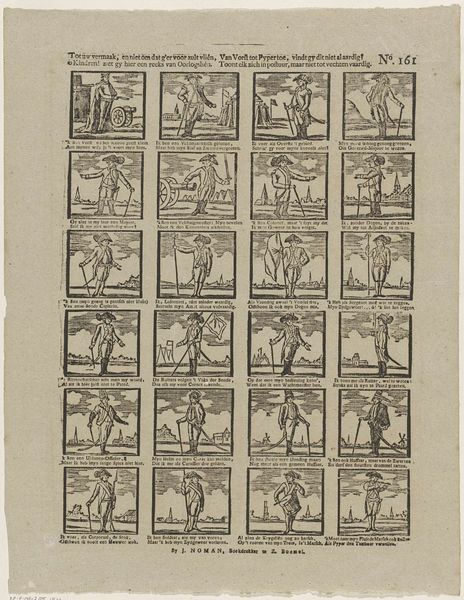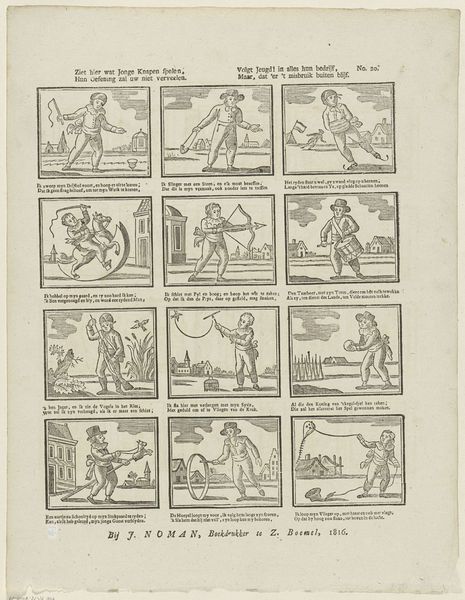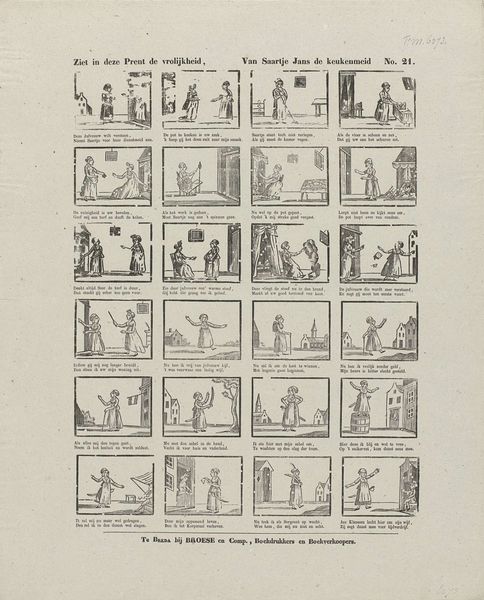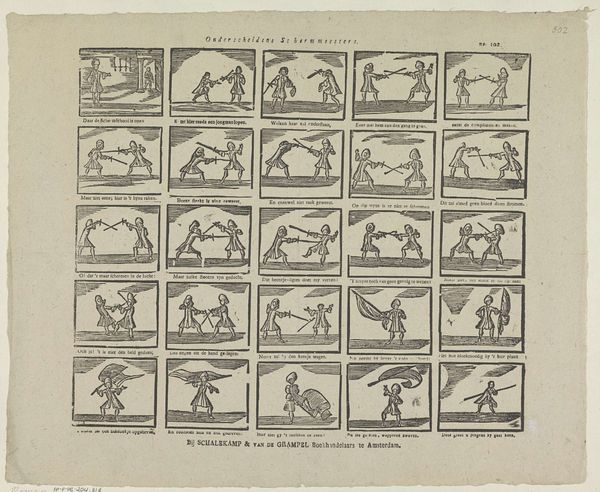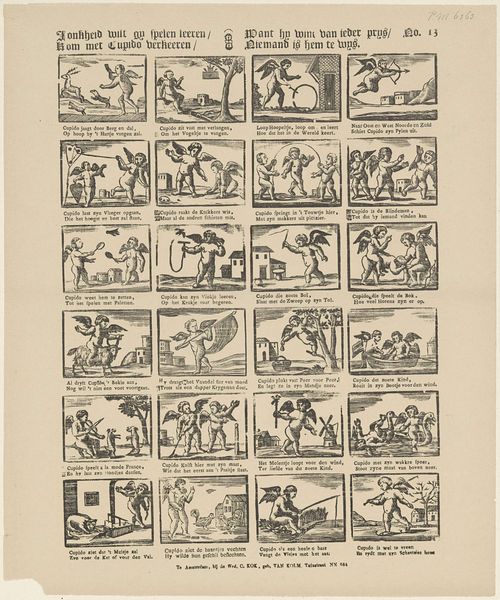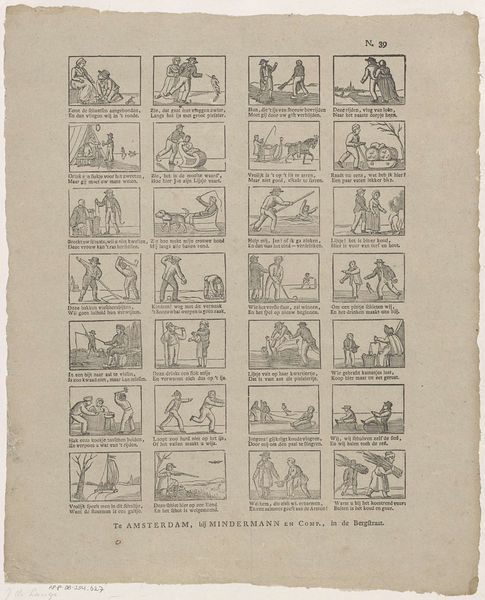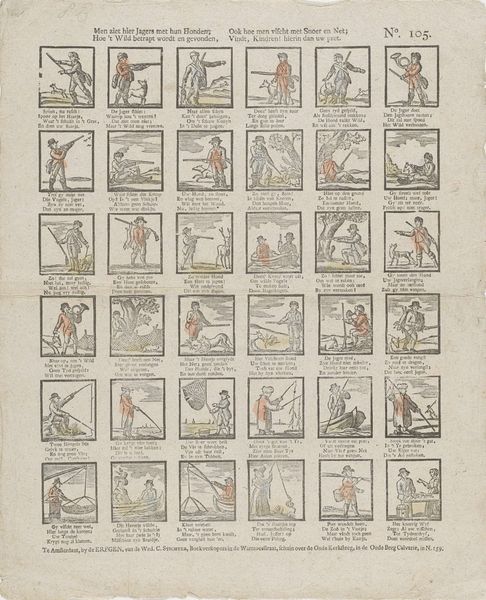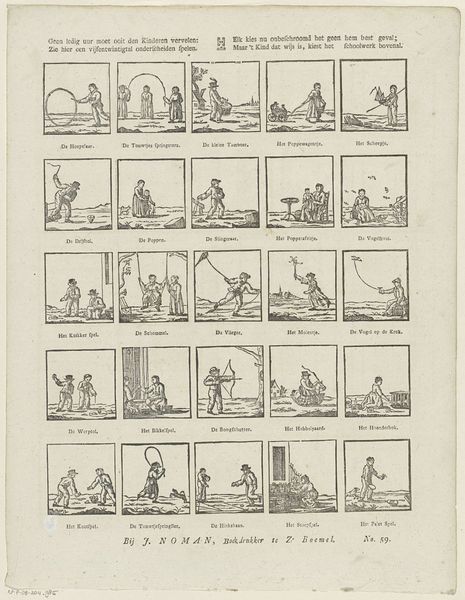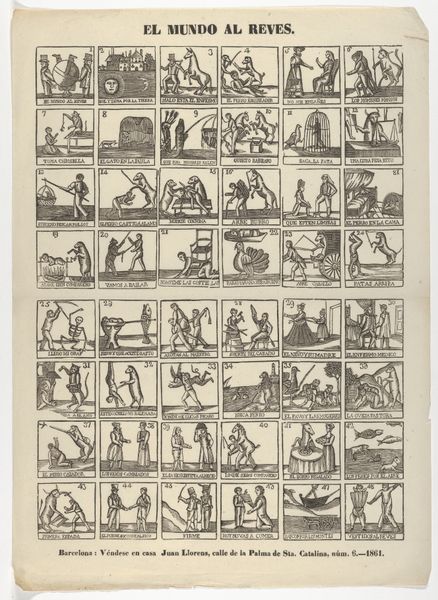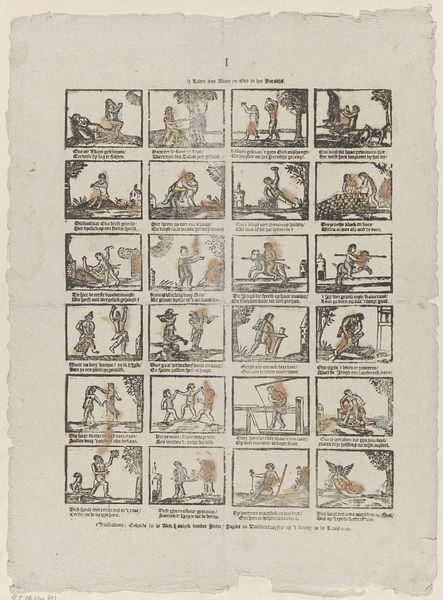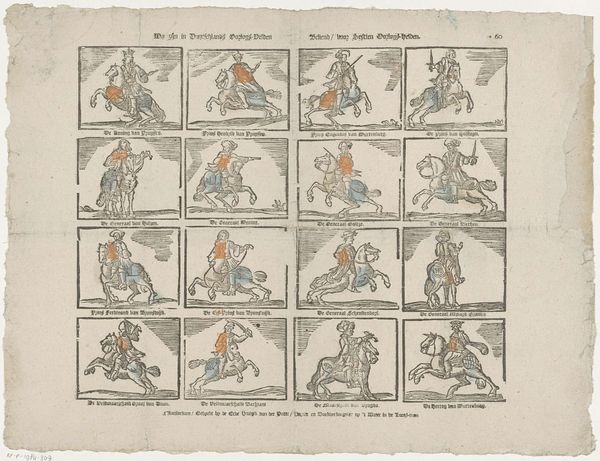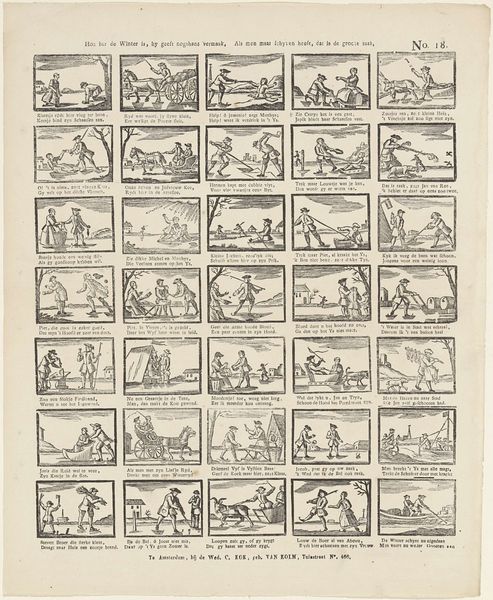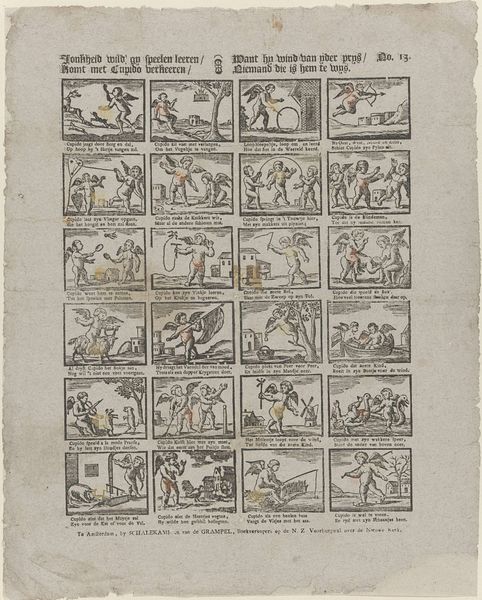
Wil, kindren! u met deeze snaaken, / En met hun zang en spel vermaaken, / of schoon 't niet door uw ooren dringt / Wat elk van hun of speelt, of zingt 1806 - 1830
0:00
0:00
johannoman
Rijksmuseum
graphic-art, print, engraving
#
graphic-art
#
narrative-art
# print
#
genre-painting
#
engraving
Dimensions: height 408 mm, width 318 mm
Copyright: Rijks Museum: Open Domain
Curator: What a curious little thing! I’m struck by how busy and bustling this print is. Almost like a page from a children’s book…but, what am I actually looking at here? Editor: Well, what you're observing is an engraving titled "Wil, kindren! u met deeze snaaken, / En met hun zang en spel vermaaken, / of schoon 't niet door uw ooren dringt / Wat elk van hun of speelt, of zingt” (Children, enjoy these Snakes, And with their song and play amuse yourselves, although it does not penetrate your ears, what each of them plays or sings"). Created sometime between 1806 and 1830 by Johan Noman. It's part of the Rijksmuseum collection, and seems to depict a series of vignettes showcasing children engaged in various musical activities. Curator: Ah, "Snakes!" I see. Rather archaic use of the term for musical instruments. Though knowing children... I still think it could be a double meaning. The scenes themselves—so tiny and packed together, remind me of a comic strip, a charming early attempt, almost a proto-comic panel arrangement. There’s something very honest and folk-arty about it. Editor: Precisely, and this “folk-arty” feel really reflects its socio-political context. During this period, genre painting flourished in the Netherlands, which catered to a growing middle class with its depictions of everyday life and accessible moral lessons. And music then, just as now, was often viewed as a culturally formative activity for the young. Think about the investment—especially gendered— in the musical education of children. Curator: That’s fascinating. It’s tempting to think of these children just happily tootling their instruments, but placing that within a historical social reality just changes everything. It also gives that text some heft! A reminder that, though they’re playing and singing, that’s not *all* that’s happening. What kinds of social hierarchies, and class structures are at play here, literally? Editor: Yes, the text is so important here, framing childhood as a site of early indoctrination, preparation, cultivation. While seemingly innocuous, the children shown with these 'snakes' – instruments that represent societal harmony and culture—are also being molded into participating in a particular cultural script, and possibly a hegemonic culture at large. What is often overlooked, or brushed off in Art Historical interpretations, are the nuances within this "simple" narrative. Curator: "Cultivating our gardens..." Very pointed indeed. Okay, now I'm feeling very thoughtful. It went from whimsical and nostalgic to quite incisive very fast! Editor: Isn't it wonderful how these glimpses from the past, can reveal hidden messages. Perhaps even offer new lenses, through which to view art's relationship to our present.
Comments
No comments
Be the first to comment and join the conversation on the ultimate creative platform.

